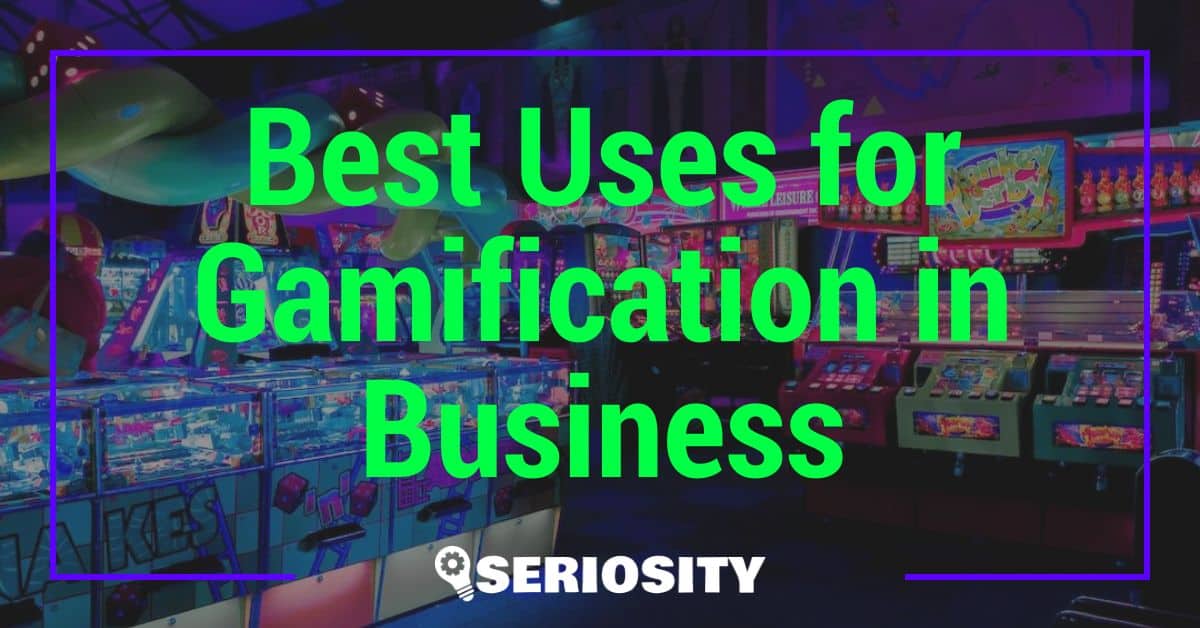Imagine diving into the world of epic fails where business giants didn’t just stumble but spectacularly face-planted. It’s a journey through decisions so bad, they’ve earned their place in the hall of shame. From missed opportunities that could’ve changed the course of companies to blunders that cost billions, we’re about to uncover the worst business decisions of all time.

You might find yourself shaking your head in disbelief or even chuckling at the sheer absurdity of these choices. But there’s a silver lining here: each story is a lesson in disguise, a reminder that even the mightiest can falter. So, buckle up for a ride through business history’s most unforgettable flops.
Key Takeaways
- Blockbuster’s failure to adapt to digital trends and its refusal to buy Netflix for $50 million in 2000, showcases the necessity of recognizing and embracing technological advancements and changing consumer behaviors in business.
- Coca-Cola’s introduction of New Coke in the mid-1980s, despite its established brand love, emphasizes the importance of understanding and maintaining emotional connections with consumers, as well as the risks associated with unnecessary innovation on successful products.
- Sony’s Betamax losing out to JVC’s VHS, due to restricted licensing and ignoring consumer preferences for longer recording times, underlines the critical balance between product quality and accessibility, along with the need to adapt to market demands.
- Yahoo’s missed opportunity to buy Google for $1 million in 1998, followed by its unwillingness to pay $5 billion in 2002, demonstrates the pivotal role of forward-thinking and seizing opportunities in shaping a business’s future success.
- Nokia’s fall from grace, due to its late pivot from the Symbian operating system to more modern platforms, highlights the fatal cost of overconfidence and the underestimation of software’s importance over hardware in the tech industry.
The Decline of Blockbuster Video
Picture this: you’re in the late ’90s, and Friday nights are synonymous with visiting your local Blockbuster. The blue and yellow sign is a beacon for movie enthusiasts. Fast forward a few years, and it’s hard to find a Blockbuster open. How did such a giant falter? Let’s dive into one of the most talked-about blunders in business history.
Blockbuster was the undisputed king of video rentals. Yet, in 2000, Netflix, then a fledgling DVD-by-mail rental service, proposed that Blockbuster buy them out for $50 million. Blockbuster’s CEO laughed off the proposal. In hindsight, this moment is a staggering illustration of missed megatrends. Netflix’s model was poised to disrupt the entire video rental industry, seamlessly transitioning to streaming with the broadband internet boom.
The key mistake? Blockbuster underestimated the shift towards digital. When Blockbuster finally caught on, it was too late. They launched a digital service, but it couldn’t compete with Netflix’s established platform and algorithmic personalization.
Let’s look at some numbers:
| Year | Blockbuster Stores Worldwide | Netflix Subscribers |
|---|---|---|
| 2004 | Over 9,000 | 2.6 million |
| 2010 | Approx. 3,000 | Over 20 million |
| 2013 | Last 300 stores announced closure | Over 40 million |
This decline was not just about missing out on buying Netflix. It was about failing to see where consumer behaviors were heading. You’re living in an era where understanding technology and consumer trends is crucial. Blockbuster’s story is a powerful reminder to always look forward, to innovate, and to understand that what works today might not tomorrow.
In the context of running your own online business or side-hustle, Blockbuster’s oversight emphasizes the need to stay agile and continuously seek out emerging opportunities. Observing consumer behavior and leveraging technology can be make-or-break in your entrepreneurial journey.
New Coke: A Not-So-Sweet Refresh
Imagine being at the helm of a legendary brand, Coca-Cola, which has delighted millions with its secret formula since the 19th century. In the mid-1980s, in an ambitious move to stay ahead in the so-called “cola wars,” Coca-Cola made a decision that’s now a classic example of “if it ain’t broke, don’t fix it.” They introduced New Coke, a sweeter version of the original formula.
Why fix what isn’t broken? That’s the question you might ask. At that time, taste tests suggested consumers preferred the sweeter taste of Pepsi. So, Coca-Cola executives, fearing they were losing the taste battle, decided to reformulate their iconic drink. The launch of New Coke was accompanied by a huge marketing campaign, confidently declaring it superior in taste to not only the original Coke but also Pepsi.
However, the backlash was immediate and intense. Devoted Coca-Cola consumers felt betrayed; it was as if a piece of their identity had been altered without their consent. Letters poured in, protests were organized, and the media had a field day. The public’s attachment to the original Coca-Cola formula was something the company had grossly underestimated. Coke’s mistake wasn’t in trying to innovate but rather in misunderstanding the emotional connection customers had with their product.
Within months, Coca-Cola announced the return of the original formula, now branded as “Coca-Cola Classic.” This move helped to regain the trust of many consumers, but the fiasco of New Coke remains a cautionary tale. It underscores the importance of not just listening to consumers but truly understanding their connection to your brand. Additionally, it highlights that radical change isn’t always necessary for innovation, especially when your existing product holds a special place in the market and customers’ hearts.
In your journey as an entrepreneur or business enthusiast, remember that understanding your audience’s needs and emotions is just as crucial as the products or services you offer.
The Infamous Betamax Failure
Imagine it’s the late 1970s, and you’re witnessing the dawn of home video. You’re torn between two formats: Betamax by Sony and VHS by JVC. Betamax had better quality, but as a budding entrepreneur, you might sniff out there’s more to success than just that. Sony’s Betamax failure is a classic example of how not to handle a competitive marketplace.
Sony made a crucial mistake by restricting Betamax’s licensing. They wanted to keep control over their superior technology, betting that quality would win the day. In contrast, JVC’s VHS was practically given away, with open licensing to any manufacturer that wanted in. This difference in strategy led to VHS rapidly dominating the market due to its availability and longer recording time, despite its inferior quality.
Here’s what went down in the battle of the formats:
| Feature | Betamax | VHS |
|---|---|---|
| Introduced | 1975 | 1976 |
| Max Recording | Initially 1 hour | Initially 2 hours |
| Licensing | Restricted | Open |
| Quality | Higher | Lower |
| Outcome | Lost the market battle | Became market leader |
It wasn’t just the lengthy recording time that secured VHS’s victory; it was the ease of access and the sheer number of available movies. By the time Sony decided to relax its licensing policies, it was far too late. The marketplace had spoken, and VHS reigned supreme.
If you’re diving into a market with a new product or service, remember that flexibility and understanding market needs can be just as crucial as the quality of your offering. Sony’s Betamax is a stark reminder to heed market trends and consumer preferences. It’s not just about having a superior product. It’s about how you position it, market it, and make it accessible to your target audience.
Yahoo Says No to Google’s Buyout Offer
Imagine being at the forefront of the internet boom, holding the keys to what would become the most influential technology of your generation. Now, imagine turning down an offer to buy a company that would eventually be worth over a trillion dollars. That’s exactly what happened when Yahoo had the chance to buy Google.
Back in 1998, Google’s founders Larry Page and Sergey Brin approached Yahoo with an offer to sell their fledgling search technology for a mere $1 million. Yahoo, confident in its position as the leading search engine, declined the offer. They believed their own search capabilities were superior and failed to see Google’s potential. This decision is often cited as one of the biggest missed opportunities in the tech industry.
The story doesn’t end there, though. Fast forward to 2002, Google’s valuation had skyrocketed and Yahoo came back to the table, this time with a $3 billion offer. Google countered, asking for $5 billion – a sum Yahoo wasn’t willing to meet.
| Year | Event | Offered Amount |
|---|---|---|
| 1998 | Yahoo declines to buy Google for $1 million | $1 Million |
| 2002 | Yahoo’s offer to buy Google for $3 billion | $3 Billion |
| 2002 | Google’s counter-offer | $5 Billion |
This decision turned out to be one of the most significant missteps in Yahoo’s history. Google went on to dominate the internet, transforming into a tech behemoth, while Yahoo struggled to maintain its relevance in a rapidly changing digital landscape.
As entrepreneurs and business enthusiasts, we’re reminded that success often hinges not just on having a superior product or service, but also on recognizing and seizing opportunities, sometimes those that aren’t immediately obvious. Yahoo’s inability to foresee Google’s potential and negotiate a deal that would have drastically altered both companies’ trajectories is a powerful lesson in vision and adaptability.
The Costly Mistake of Nokia’s Operating System
In your entrepreneurial journey, you’ve likely learned that adaptability and foresight are crucial. Let’s talk about a story that’s not just a lesson, but a monumental cautionary tale in the tech industry—Nokia’s operating system debacle. In the early 2000s, Nokia was the king of the mobile world. Their phones were everywhere, and their market share was unparalleled. But as you know, in business, especially in tech, today’s leader can quickly become tomorrow’s afterthought without continuous innovation.
Nokia made a fateful decision that seems almost unthinkable from today’s perspective—they chose to stick with their Symbian operating system, even as the tide was turning toward more advanced platforms like iOS and Android. At the time, Symbian was widely used, but it was clunky and not user-friendly compared to the sleek new competitors. This decision was rooted in a mix of overconfidence and a misjudgment of where the market was heading.
Key Misstep: Nokia’s leadership failed to see the importance of software over hardware. In their eyes, the quality and durability of their phones were enough to keep them on top. They underestimated just how much the user experience, driven by the OS, would come to define the smartphone era.
By the time Nokia realized its mistake, it was too late. The company tried to switch gears by adopting Microsoft’s Windows Phone platform, but by then, the smartphone market had firmly become a two-horse race between Apple and Google. Here’s a quick look at the stark contrast in market share, showcasing Nokia’s decline:
| Year | Nokia’s Global Smartphone Market Share |
|---|---|
| 2007 | 49.4% |
| 2013 | 3% |
You can almost feel the shift in the market and Nokia’s positioning just through these numbers. The lesson here? Always be willing to pivot and adapt. Nokia’s initial refusal to innovate on the software front shows that no company is too big to fail from staying in their comfort zone. Remember, the right time for change is before it becomes necessary.
Conclusion
Reflecting on these monumental blunders, it’s clear how crucial adaptability and foresight are in the business world. Whether it was Coca-Cola’s New Coke fiasco or Nokia’s stubborn commitment to Symbian, each story serves as a stark reminder that the market waits for no one. You’ve seen how a single decision can alter the course of a company’s future, sometimes irreversibly. Let these tales be a lesson in humility and innovation. Remember, in the fast-paced arena of business, staying ahead means staying open to change and ready to pivot at a moment’s notice. Keep these examples in mind as you navigate your own business decisions, and who knows? Maybe you’ll avoid making a similar list in the future.
Frequently Asked Questions
What are some examples of the worst business decisions of all time?
Examples of some of the worst business decisions include the introduction of New Coke by Coca-Cola, Sony’s failure with Betamax, Yahoo’s rejection of Google’s buyout offer, and Nokia’s choice to stick with its Symbian operating system despite the market shift towards iOS and Android.
Why did Coca-Cola introduce New Coke?
Coca-Cola introduced New Coke in an attempt to revitalize the brand and increase market share. However, the public reaction was overwhelmingly negative, making it one of the worst business decisions due to the company underestimating consumer attachment to the original formula.
What was Sony’s Betamax, and why did it fail?
Sony’s Betamax was a video cassette recording format that failed due to Sony’s stringent control over its licensing, making it more expensive and less appealing than its competitor VHS, which was supported by a broader range of manufacturers.
Why did Yahoo reject Google’s buyout offer?
Yahoo rejected Google’s buyout offer because at the time, Yahoo’s executives failed to see the future potential and value of Google as a dominant force in the search engine market and advertising. This decision is considered one of the major missed opportunities in tech history.
What led to Nokia’s decline in the smartphone market?
Nokia’s decline in the smartphone market was primarily due to its decision to continue with the Symbian operating system, failing to adapt to the shift towards more advanced platforms like iOS and Android. This was compounded by underestimating the importance of software and user experience, and by the time Nokia switched to the Windows Phone platform, it was too late to recover its market position.
How important is adaptability and foresight in business?
The examples highlighted in the article showcase that adaptability and foresight are crucial in business. Companies need to be willing to evolve with changing market trends and recognize future opportunities or threats. Failing to do so can lead to significant losses and even the demise of once-dominant brands.















